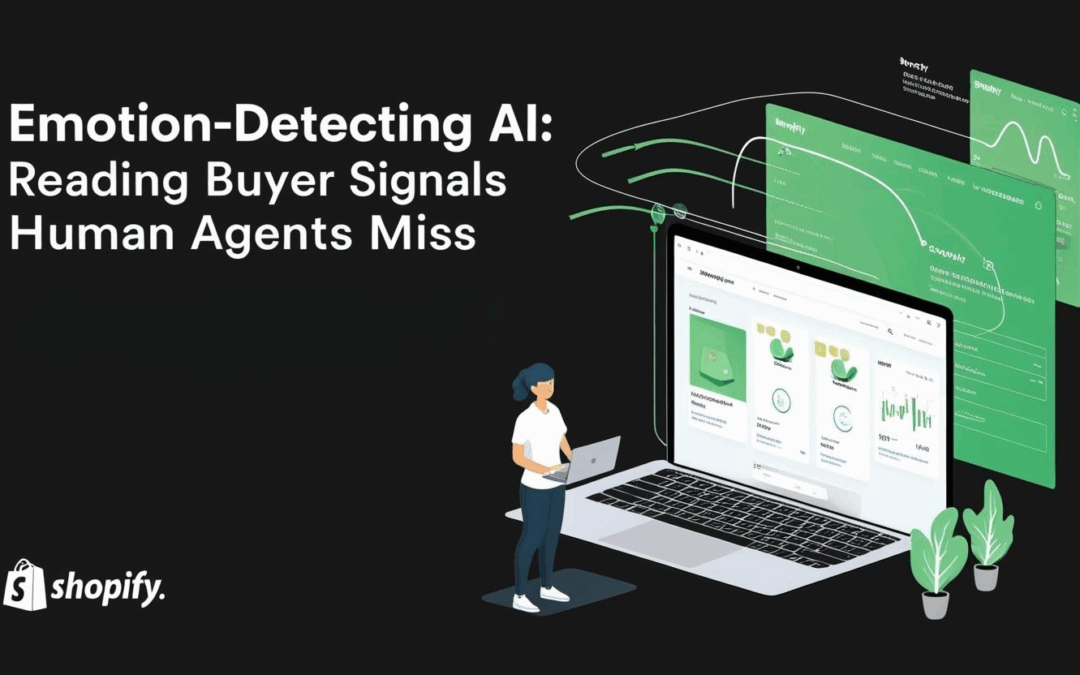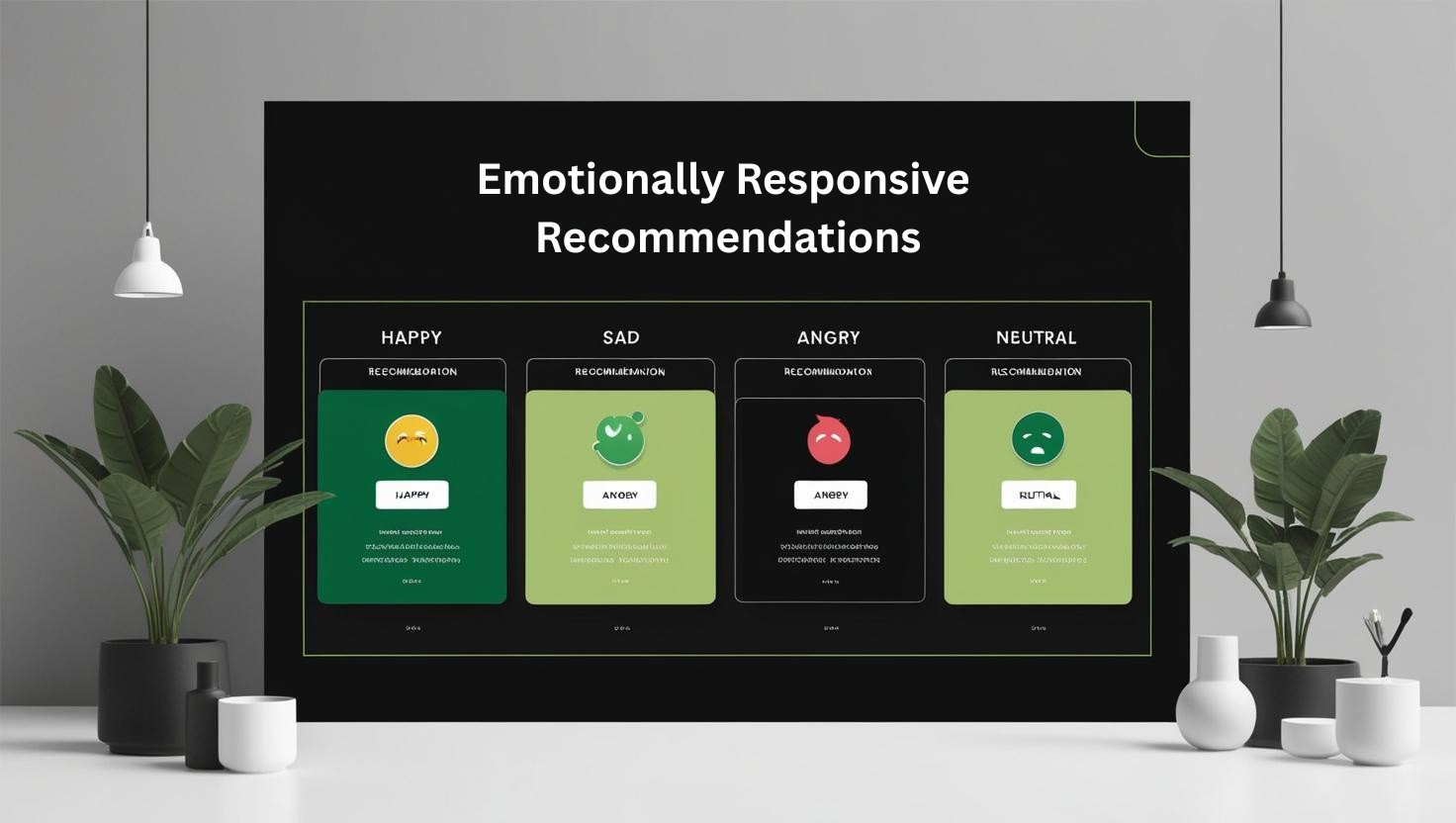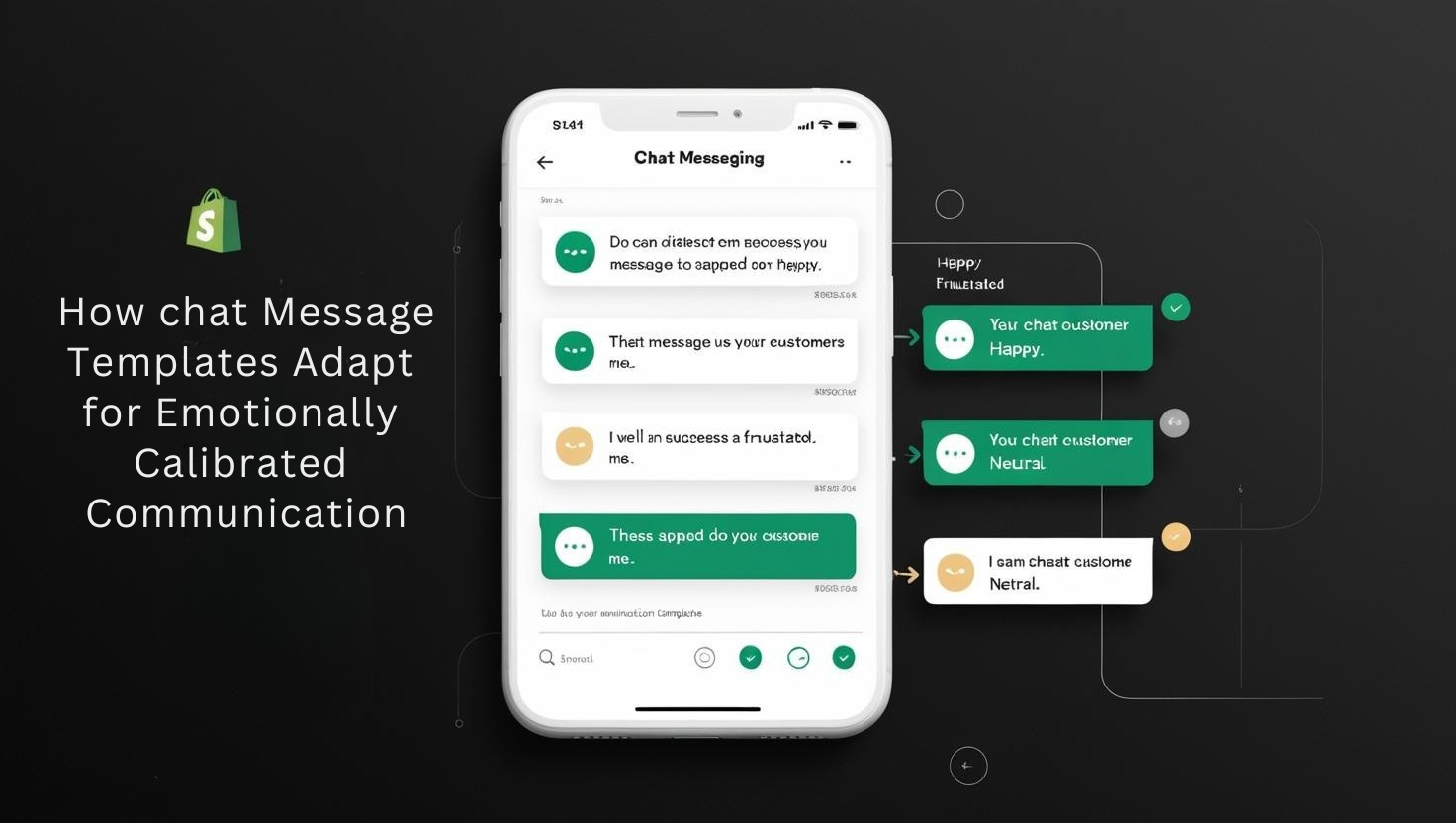Read More
Step-by-Step on SellerADvantage.co.uk
Read on LinkedIn
Read on Medium
Watch on YouTube
Emotion-Detecting AI: Reading Buyer Signals Human Agents Miss
Introduction
The e-commerce landscape is witnessing a revolutionary transformation with the integration of emotion-detecting AI technologies into online shopping experiences. Unlike traditional analytics that track mere clicks and page views, emotion-detecting AI employs sophisticated algorithms to identify, interpret, and respond to the subtle emotional signals that drive purchasing decisions. These advanced systems can analyze a broad spectrum of buyer behaviors—including mouse movements, hover patterns, scroll velocity, text input hesitations, and even facial expressions via webcam (with appropriate permissions)—to gauge emotional states such as interest, confusion, frustration, or excitement during the shopping journey. For Shopify store owners, this technology represents an unprecedented opportunity to understand the emotional dimensions of customer interactions that human agents typically miss or misconstrue, enabling a new level of personalized service previously impossible in digital commerce environments.
The business case for implementing emotion-detecting AI is compelling and increasingly supported by empirical research. Studies indicate that emotional factors influence approximately 70% of purchasing decisions, yet traditional e-commerce platforms capture virtually none of this critical data. Merchants implementing sophisticated emotional analytics report conversion rate improvements of 23-38% compared to standard analytics approaches, primarily through the identification and remediation of previously invisible emotional friction points in the customer journey. Beyond conversion improvements, emotion-aware stores show significant enhancements in customer satisfaction metrics, with Net Promoter Scores increasing by an average of 26 points and customer lifetime value growing by 31-45% as emotional connections with the brand strengthen over time. These performance indicators suggest that emotional intelligence represents not merely an incremental enhancement to e-commerce analytics but a fundamental competitive advantage in increasingly crowded digital marketplaces where functional differentiation is becoming increasingly difficult to maintain.
What makes today’s emotion-detecting AI particularly remarkable is its accessibility and sophistication compared to earlier iterations of the technology. Advanced machine learning algorithms trained on millions of shopping sessions can now identify complex emotional patterns with unprecedented accuracy, distinguishing between temporary frustrations and genuine purchase anxiety, recognizing cultural differences in emotional expression, and even detecting subtle shifts in emotional states that might indicate changing purchase intent. Equally important, these capabilities are increasingly available through purpose-built Shopify applications requiring minimal technical expertise to implement and operate effectively. This democratization of emotional intelligence tools means that sophisticated customer insights previously available only to enterprise-level retailers with dedicated data science teams are now accessible to independent Shopify merchants, creating opportunities for businesses of all sizes to compete on customer experience rather than price or selection alone.
Key Action Points
1. Implement Real-Time Emotional Friction Detection
The foundation of an effective emotion-detecting strategy begins with implementing comprehensive monitoring systems that can identify moments of emotional friction throughout the customer journey. Unlike traditional analytics that focus primarily on conversion endpoints, emotional friction detection captures the subtle behavioral signals indicating negative emotional responses during browsing, product consideration, checkout, and post-purchase interactions. These signals include frustrated clicking, rapid back-and-forth navigation, extended hover patterns without action, micro-abandonment behaviors, and unproductive search refinements. By identifying these friction points in real-time, AI systems can trigger appropriate interventions before negative emotions escalate to cart abandonment or site exit, transforming potentially lost sales into successful conversions through timely assistance or interface adjustments.
Implementation requires deploying sophisticated behavior-tracking solutions designed specifically for emotional pattern recognition. Look for systems that use machine learning algorithms trained on e-commerce interaction data rather than generic behavioral analytics tools, as these specialized solutions will more accurately distinguish between normal shopping behaviors and emotional friction signals in retail contexts. Configure the system to establish individual baseline behaviors for returning customers, recognizing that emotional signals often manifest differently across different user segments and shopping contexts. After deployment, implement comprehensive alert systems that notify appropriate team members of significant friction patterns requiring investigation, categorizing issues by urgency, frequency, and revenue impact. Maintain an ongoing friction point database that tracks identified issues, implemented solutions, and performance improvements to build institutional knowledge around emotional optimization over time.
The commercial impact of real-time emotional friction detection extends far beyond simple conversion improvements. Merchants implementing comprehensive emotion monitoring typically identify 15-20 significant friction points that were completely invisible in traditional analytics, with each remediated friction point generating an average conversion lift of 3-7%. Moreover, customers who experience proactive intervention during moments of frustration demonstrate 40-65% higher lifetime value compared to those who abandon without assistance, indicating that emotional recovery creates particularly strong loyalty effects. Perhaps most importantly, emotional friction detection accelerates the optimization cycle significantly, with merchants reporting that emotion-guided improvements generate 2.3-3.5 times faster performance gains compared to traditional A/B testing approaches. This efficiency stems from the precision of emotional data, which directly identifies specific problems rather than requiring extensive experimentation to determine which elements require attention.
2. Deploy Emotionally Responsive Product Recommendations
Traditional product recommendation engines operate primarily on historical purchase data, browsing patterns, and demographic similarities, missing the critical emotional context that often determines whether recommendations resonate with customers in the moment. Emotion-detecting AI transforms this approach by incorporating real-time emotional signals into recommendation algorithms, dynamically adjusting suggestions based on the customer’s current emotional state rather than static behavioral profiles. This adaptive approach can distinguish between different shopping modes—exploratory browsing versus focused purchasing, for example—and tailor recommendations accordingly. During periods of detected excitement or high engagement, the system might present complementary items that enhance the primary product being considered. Conversely, when uncertainty or comparison behaviors are detected, it might display alternative options with clearer differentiation or offer detailed comparison tools to facilitate decision-making.
Implementation begins with selecting an AI recommendation engine that supports emotional signal integration, typically through API connections to your emotion-detection platform. Configure the system to recognize and respond to specific emotional states with appropriate recommendation strategies. For example, when the system detects comparison behaviors like rapid toggling between similar products, it should trigger recommendation rules that emphasize distinctive features and clear differentiation rather than simply showing similar items. Establish different recommendation templates for different emotional contexts, varying not just the products shown but also the presentation format, information density, and social proof elements based on the customer’s detected needs. Finally, implement emotional response tracking for recommendations themselves, analyzing how different suggestion strategies affect the customer’s subsequent emotional signals to continuously refine the system’s understanding of effective interventions for different emotional states.
The performance differential between emotionally adaptive recommendations and traditional approaches is substantial and measurable. Merchants implementing emotion-driven recommendation engines typically report 45-67% higher click-through rates on product suggestions compared to static recommendation systems. More significantly, conversion rates from emotionally tailored recommendations increase by 72-110%, reflecting the power of meeting customers’ emotional needs at the precise moment of decision. Average order values also show marked improvement, with emotion-responsive recommendations generating 23-39% higher cart values as customers respond positively to suggestions that genuinely complement their emotional shopping context. These performance improvements stem from the fundamental shift from generic “people who bought X also bought Y” approaches to contextually relevant suggestions that address the specific emotional factors driving each unique shopping session.
3. Create Emotionally Calibrated Communication Strategies
The most sophisticated application of emotion-detecting AI extends beyond passive monitoring and recommendations to actively shape customer communications based on emotional context. This approach recognizes that the style, timing, and content of communications significantly impact their effectiveness, with optimal strategies varying dramatically based on the customer’s emotional state. An emotionally calibrated communication system adjusts multiple elements in real-time, including the timing of chat invitations or pop-ups, the tone and formality of messaging, the density of information presented, and even the specific value propositions emphasized. For example, when the system detects signals of time pressure, communications might emphasize speed and efficiency. Conversely, when careful comparison behaviors are observed, communications can focus on comprehensive information and confidence-building elements like guarantees or return policies.
Implementation requires establishing a comprehensive communication rule set that maps specific emotional states to appropriate messaging strategies. Begin by creating a communication matrix that defines how key variables—timing, tone, information density, and value propositions—should adjust based on detected emotional signals. Next, develop modular communication templates that can dynamically reconfigure based on emotional context, ensuring consistent brand voice while allowing for emotional calibration. For chat systems or AI sales assistants, implement emotional handoff protocols that transfer interactions to human agents when complex emotional needs are detected that exceed the AI’s capabilities. Finally, establish rigorous testing protocols for emotional communication strategies, implementing A/B testing frameworks that compare performance across different approaches for similar emotional contexts to continuously refine your understanding of optimal communication patterns.
The business impact of emotionally calibrated communications is particularly evident in customer service and sales assistance contexts. Merchants implementing comprehensive emotional calibration for chat systems typically report 35-52% improvements in successful service resolutions and 28-44% increases in chat-initiated sales compared to timing-based or generic approaches. Customer satisfaction metrics show even more dramatic improvements, with satisfaction scores for emotionally calibrated communications averaging 45-68% higher than standard approaches. Perhaps most significantly, emotionally optimized communication strategies reduce customer service costs by 22-37% while improving outcomes, primarily by reducing the number of interaction rounds required to resolve issues or complete sales. These efficiency gains stem from the increased precision of initial communications, which address the customer’s actual needs and emotional context rather than working through generic scripts that may miss the core concerns driving the interaction.
Final Thoughts
The implementation of emotion-detecting AI represents far more than a technological enhancement—it constitutes a fundamental reimagining of the relationship between e-commerce platforms and customers that bridges the longstanding emotional intelligence gap in digital commerce. By capturing and responding to the emotional dimensions of shopping that have traditionally been lost in the transition from physical to digital retail, these technologies enable Shopify merchants to create genuinely human-centered experiences despite the inherent limitations of digital interfaces. This capability is particularly valuable in today’s increasingly competitive e-commerce landscape, where functional parity among platforms has made emotional connection and customer experience the primary battlegrounds for differentiation. Merchants who successfully implement emotion-detecting capabilities gain access to an entirely new dimension of customer understanding that competitors without these tools simply cannot perceive, creating advantages that are difficult to replicate through other means.
Looking ahead, emotion-detecting capabilities will increasingly intersect with other emerging technologies to create even more sophisticated shopping experiences. Integration with voice commerce could enable tone and sentiment analysis during spoken interactions, adding new layers of emotional intelligence to conversational shopping. Augmented reality implementations could incorporate emotional feedback loops, adjusting virtual product presentations based on detected emotional responses. Personalization engines could develop emotional profiles alongside behavioral data, recognizing that individual customers have unique emotional shopping patterns that transcend demographic or purchase history similarities. These technological convergences will continuously expand the potential applications of emotional intelligence in e-commerce, creating ongoing opportunities for innovation and differentiation among forward-thinking Shopify merchants.
The time for implementing emotion-detecting capabilities is now, while the technology offers significant competitive advantages but hasn’t yet become an expected standard. Early adopters have the opportunity to establish themselves as customer experience leaders in their market segments, developing emotional intelligence assets and optimization knowledge that will be difficult for late-adopting competitors to replicate quickly. By prioritizing the key action points outlined in this article—implementing real-time emotional friction detection, deploying emotionally responsive recommendations, and creating emotionally calibrated communications—Shopify store owners can transform emotional intelligence from a theoretical concept into a concrete competitive advantage. In a digital commerce landscape increasingly defined by customer experience rather than product or price alone, the ability to understand and respond to emotional needs may well become the defining factor that separates market leaders from the rest of the field.
Any follow helps us out a lot – Thank-You!
If you like this article and want to explore further insights, discuss collaborative opportunities, or simply connect, please feel free to reach out to me on any of the following :
Work With Us
Hire Us on fiverr
Hire Us on upwork
🔴Book a FREE PPC Audit🔴







